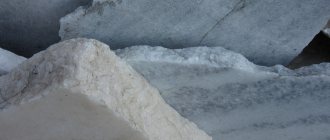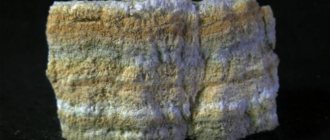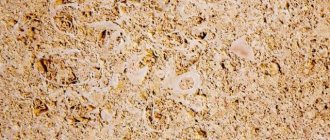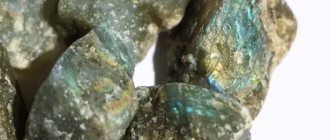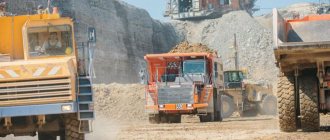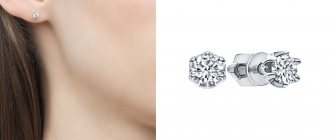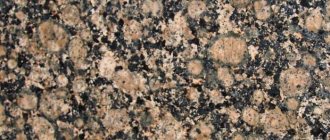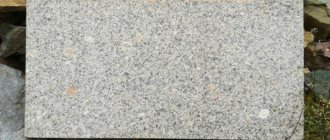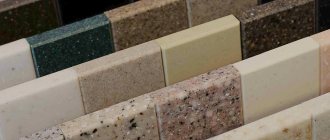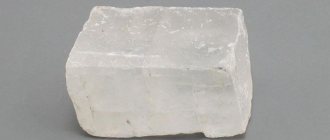- October 29, 2018
- Production
- Ekaterina Ryzhkova
What is chalk made from? What kind of connection is this? You will find answers to these and other questions in the article. It can be called a “witness of eras” that disappeared tens of millions of years ago. This compound is biologically sourced and therefore has physical and chemical properties. We will find out what chalk is made from below.
Features of occurrence
Few people know what chalk is made from. Let us pay attention to its occurrence in nature. When dinosaurs lived on Earth (and this was about 80 million years ago), there was the Cretaceous period. The tiny seas of that time were inhabited by millions of small mollusks, which built their skeletons and shells from calcium in the water. The remains of creatures accumulated in layers of many meters in the bottom sediments and transformed into white chalk.
Mineral structure
Many people ask, “What is chalk made from?” In percentage terms, the following components of this mineral are distinguished:
- Up to 10% of chalk is found in the shells of tiny foraminifera mollusks.
- About 10% are fragments of the skeletons of multicellular animals, the simplest creatures that accumulate calcium in their tissues.
- Up to 50% is finely dispersed crystalline calcite.
- Up to 3% - lump chalk (in the form of silicates). It is presented in the form of geological debris (rock remains, sand), carried by currents and winds into the Cretaceous deposits.
- Fragments of algae growths contain up to 40% calcium salts. Microscopic living suspension in the seas is coccolithophores that create calcareous silt.
Rubber industry
Chalk is in first place among all fillers used in industry. This is primarily due to the fact that the use of this raw material is economically profitable. Chalk has a relatively low cost. At the same time, its introduction into rubber products does not cause harm. The second reason for the popularity of raw materials in the industry is technological feasibility. Chalk significantly simplifies the process of manufacturing rubber products. In particular, due to it, vulcanization is accelerated, the surface of the products becomes smooth. The rock is also widely used in the production of spongy and porous rubber, plastic products, leather substitutes, etc.
Chemical composition
So, you already know what stone chalk is made from. Now let's look at its composition. It is known that the white mineral contains up to 50% calcium oxide and approximately 2% magnesium oxide. What substances give color to this mineral?
Chalk can sometimes contain even 3-4% aluminum oxide, as well as some iron oxides. In this case, it will have a pink or red tint.
It is believed that the chemical formula of this rock is identical to the formula of potassium carbonate - CaCO3.
It includes:
- aluminum oxide – up to 4%;
- carbon dioxide – up to 43%;
- calcium oxide – from 47 to 55%;
- silicon dioxide – no more than 6%;
- magnesium oxide – no more than 2% of total body weight;
- sometimes iron - no more than 0.5%.
By the way, high silicon content increases the density of chalk.
Interesting Facts
Do you know what school chalk is made from? Is it possible to eat it? If a person does not have enough calcium in his body, he has a craving for eating chalk. Doctors have mixed views on this issue. When it comes under the influence of gastric juice (concentrated hydrochloric acid), it significantly changes its qualities.
Chalk goes through a large number of oxidative processes. As a result, it loses its primary neutrality and turns into an aggressive chemical compound, similar in properties to slaked lime (calcium hydroxide).
This is why the gastrointestinal mucosa is seriously damaged when it comes into contact with an oxidized mineral.
If chalk is eaten in large quantities, it will provoke liming of blood vessels. If you have a calcium deficiency, it is much safer to take special medications, for example, calcium gluconate.
Doctors warn patients about the inadmissibility of using agricultural feed, stationery, and construction chalk for food.
Harm and benefits of chalk when eaten
Lump chalk for food is becoming increasingly popular; the harm and benefits of this substance are discussed by experts to this day. It is not possible to clearly evaluate the sedimentary mineral, because it has both negative and positive effects on the human body.
The benefits of natural chalk for food are as follows:
- Strengthens fragile bones and serves as a preventive measure against caries;
- Helps maintain healthy and beautiful hair, nails, teeth and skin;
- In small quantities it helps to improve the functioning of the digestive system;
- Provides joint mobility and muscle elasticity;
- Promotes proper functioning of the cardiovascular system;
- Participates in metabolic processes at the intercellular level;
- Affects blood clotting and hemoglobin levels (indirectly).
Tasty chalk for food has a negative effect only when there is an excess of it in the body.
Excessive calcium intake leads to the following side effects:
- Increased blood clotting;
- Reduced strength of bone tissue and tooth enamel;
- The emergence of a risk of diseases of the endocrine system;
- Angina;
- Decreased muscle tone;
- The appearance of kidney stones;
- Increased acidity of gastric juices, which contributes to the development of diseases of the gastrointestinal tract (gastritis and ulcers);
- Gout;
- Calcinosis (deposits of Ca salts in the tissues of internal organs).
When discussing the negative consequences of eating chalk, we can conclude that they are caused by the quantity and quality of the mineral consumed.
Application and production
How is chalk made? It is mainly obtained through open-pit mining. The extracted blocks are crushed and then immersed in water. With continuous stirring, calcium particles float to the surface. They are dried and used for a variety of purposes. By the way, it is unwise to use chalk as a masonry raw material, since it has low hardness.
Stones that have not undergone such processing are sent for firing. The result is lime, which has long been used to whitewash ceilings inside buildings. Today, such a scope of application is almost absent, since other finishing materials have been created.
Nowadays, chalk is added to various cement mixtures in order to give them additional softness. The mineral is also in demand in the creation of glass, plastics, rubber, caoutchouc, mixtures of composite and paint materials.
The breed is used in huge quantities in the carpet and linoleum industries. With its help, they regulate the viscous qualities of latex glue, improve the heat-saving properties of products, and give them strength.
Calcium is necessary for the production of soil fertilizers and animal feed. Chalk powder is the base for creating many cosmetics: lipstick, powder, creams. It is difficult to imagine the functioning of the paper and cardboard industry without this material.
Basic properties
Humidity has a particular impact on the quality of the rock, which impairs its ductility and strength. An increase in humidity results in a process of destruction, while in dry conditions the rock can crumble even under the influence of low pressure.
Rock containing a large amount of moisture quickly sticks to construction tools. It is for this reason that construction work using calcium carbonate is carried out mainly in countries with dry climates with high temperatures. A good example of limestone buildings in ancient times is the Cheops Pyramid.
During construction in extreme temperatures, such a raft begins to disintegrate into separate parts of several millimeters.
Physico-chemical characteristics
Depending on the uniqueness of the deposits, there may be significant differences in the natural properties of chalk. Air humidity has a significant effect on the mineral. It does not dissolve in water, but forms a suspension. Calcium carbonate loses its strength when it absorbs moisture. In this case, the plasticity of the material increases significantly.
This causes serious problems in the processing and extraction of chalk; it sticks to the excavator bucket. Has little frost resistance. After thawing, it breaks down into a large number of small individual particles. This property is used in agriculture to reduce soil acidity.
Principle of Education
Many people wonder what chalk is made of. This mineral is a naturally occurring rock and is mined for later use. It is based on calcium deposits that were created by the remains of ancient earth inhabitants.
When creating products with this component, processed chalk is usually used. Natural deposits of this material contain a large amount of impurities - this includes sand, small stones, and gaseous mineral particles. It is for this reason that chalk obtained from these deposits breaks easily and dissolves in water. From such a mixture a suspension is obtained.
In this case, heavy impurities sink mainly to the bottom of the container, and light calcium components are transferred to a special container, where, after adding adhesive components to them, they are well dried, changing to the state of chalk, which is used for drawing.
Unprocessed chalk extracted from quarries is used in the construction industry to create lime.
How is chalk different from lime?
Despite their common roots, these materials differ in composition and properties. Both are considered environmentally friendly, but lime is produced by burning natural limestone, and chalk contains carbon dioxide.
Would you like to distinguish lime from chalk on your own? Take a small handful of each raw material, grind it into dust, and then rinse with a thin stream of water. The chalk will immediately disappear along with the water, but in order to remove the lime, you will have to work hard.
There are no traces left of lime whitewash. Chalk will remind you of itself for a long time even after the renovation is completed. Lime has excellent antiseptic properties, so it is used to protect shrubs and trees from insect damage.
Use in school
Everyone should know what stone school chalk is made from. At first glance, this product has a nondescript appearance. It is very relevant for students and teachers in educational institutions; children spend it drawing on city sidewalks. The consumer demands quality from any product, and chalk is no exception.
Many teachers complain that it corrodes the skin, falls off the board, gets their hands dirty, and irritates the vocal cords. What is the reason?
It is known that school chalk consists of 40% calcium carbonate and 60% gypsum or any other binding substance (starch, PVA glue). It also contains some metal oxides, magnesium carbonate, quartz impurities, and marine fossil organisms (foraminifera, radiolarians).
When layers of rock were brought to the surface from the seabed, they formed chalk cliffs, the most famous of which are located in England and France. In the Russian Federation, the largest deposits are located in the Belgorod and Voronezh regions, as well as in the Ulyanovsk, Saratov and Bryansk regions.
The oldest chalk manufacturing plant in Russia is located in Belgorod. In the area of this city, the mineral, like a rock, is still mined today. It is from the Belgorod quarries that it is transported to all enterprises that produce the material individually.
Price for mineral rock
The cost of the mineral will directly depend on the type of processing and its further use. There are several categories:
- Colored crayons, which are used for drawing on surfaces and asphalt, will cost no more than 400 rubles per pack.
- White crayons without added dyes - about 100 rubles.
- Farm material, which is ordered in large quantities, and is also taken away from production in several tons. The price for each ton of ground limestone will range from 3 to 5 thousand.
- The cost of edible chalk, which is used to add to foods and is also actively used in medicine, ranges from 40 to 300 rubles per hundred grams. The mineral belemnite is also used in medicine.
Production
How are crayons made? In Belgorod, chalk was made before and is now created using the extrusion method. In this case, wet mineral in the form of thin sausages comes from a device similar to a meat grinder. The sausage is placed on a baking sheet, cut and dried in ovens. The end result is round crayons. The technological uniqueness of this product is that it is “bonded” using glue (most often PVA), which is not entirely safe for the health of children (it is known that white chalk is eaten by children, as well as adults). But it hardly stains your hands, it is soft and pleasant to the touch.
Chalk has been used for drawing for a long time. Archaeologists are still discovering cave drawings made by this rock. Some artists drew sketches of their paintings. It was then that chalk, for convenience, acquired its generally accepted form in the form of a stick.
Since chalk is a crumbly and soft rock (powder), it is often mixed with binding substances - water and clay. Afterwards, the resulting mass is placed in molds and dried. If colored material is needed, various impurities are added to the mixture. To obtain black crayons, for example, carbon is added, and for bright red crayons, iron oxide is added.
Some manufacturers add dextrin or gypsum as a binder. And from this mixture they then make school chalk. To obtain colored crayons, dyes are sometimes added at the last stage.
Sodium bicarbonate
Various materials are used for its production, including limestone or chalk. The beneficial properties of sodium bicarbonate for the body are known to many. It is often used for diseases of the gums and throat, heartburn, and to thin phlegm when coughing. In industry, the physical properties of soda and chalk are in great demand. Both of these substances are used in construction, decoration, production of materials, paints and other products. When it comes to the production of calcium bicarbonate, using chalk alone is considered an uneconomical option. As mentioned above, this rock absorbs moisture very well, as a result of which its mechanical characteristics change. This, in turn, negatively affects the progress of the technological process.
Basic requirements
We have already answered the question of what school chalk is made from. Its composition is quite diverse. The basic requirements for writing material are:
- should not crumble when writing on the board;
- should not get your hands too dirty;
- the white product must be pure;
- absence of hard inclusions that scratch the board.
Chalk from Pegas LLC (Klin) almost does not crumble, as it is quite dense. But the products produced by LLC “get your hands very dirty. These samples use gypsum as a thickener rather than starch.
By the way, chalk cannot corrode the skin of your hands, since the reaction of its environment is neutral. Continuous work with this mineral can cause dry skin on your hands. Therefore, wash them more often and lubricate them with protective cream.
Identification of quality deposits
Initially, it was believed that the mechanical and chemical properties of chalk were the same throughout the deposit. However, in practice, with prolonged exploitation of the area, especially after the transition of the mining and processing enterprise to the production of higher quality products, differences in these characteristics are revealed. Therefore, geological and technological mapping is carried out at some fields. Researchers, studying the chemical properties of chalk and its mechanical characteristics in different areas of the deposit, designate areas of accumulation of high-quality rock.
